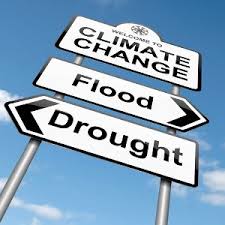Scoping Out the Green New Deal
How would we go about decarbonizing the most needy U.S. states?
Progressives are calling for a Green New Deal. The details are still very fuzzy, despite the House resolution introduced by Markey and Ocasio-Cortez. That proposal as a ten-year timetable to eliminate carbon, which is highly unrealistic. Nevertheless, it’s worth thinking about what an all-out effort to decarbonizing the economy would look like. The Green New Deal is also about creating good jobs across the economy, and we should take the factor into account as well.
In order to start scoping out what this kind of effort might entail, it makes sense to start with the states most in need of another New Deal. With that in mind, I thought it would be useful to start with the three poorest states in the Union. This is actually a pre-scoping exercise: we can get a sense of what questions need to be asked, but we don’t know the answers yet. Here are the situations of the three poorest states based on median household income, followed by a list of questions that would need to be addressed. The same three states have the lowest percentages of college-educated adults.
The Three Poorest States
West Virginia.
West Virginia has the lowest median household income in the country and among the highest unemployment and poverty rates. It also has the lowest life expectancy in the Union. It has under 2 million people.
According to the 2017 Outside the Beltway report, West Virginia’s electricity generation is 94% coal, 2% each of wind and hydro, and 1% natural gas. Electricity generation is down somewhat since the turn of the century. The Republicans have commanding majorities in both houses of the legislature, along with a Republican governor. Only 0.1% of the state’s energy comes from solar, while 2.2% comes from wind. In policy terms, the state is moving backward: it has repealed its renewable portfolio standard and restricted use of net metering for residential solar.
Mississippi.
With around 3 million people, Mississippi has the second-lowest household income, and like West Virginia has among the highest unemployment and poverty rates. It’s got the third-lowest life expectancy.
Coal is 10% of the energy mix in Mississippi, with natural gas at 70%. Recent trends also vary widely. Nuclear and biomass supply almost all of the rest. Only 0.5% of the state’s energy comes from solar, and none – that’s zero percent – of its energy generation comes from wind. About 3% comes from hydro.
Arkansas.
Arkansas has the third-lowest median household income, with a high poverty rate, but is middle-of-the-pack in terms of unemployment. It ranks 44th in terms of life expectancy. The population is about 3 million, like Mississippi.
Coal is 40% of the power mix in Arkansas. Natural gas is 27% percent, about the same as nuclear. Most of the remaining power share comes from hydro. In terms of renewables, 0.3% of the state’s energy generation comes from solar, none from wind.
Scoping Questions
It’s obvious that all of these states would benefit hugely if a Green New Deal created new jobs with good pay and benefits. It’s also clear that all of them have headroom in terms renewables. In that respect, they are typical of the Southeast states, where renewables have taken hold in only a few places. But in trying to scope out a path to a low-carbon future for these states, there are a bunch of questions that will need to be answered:
- How much could the state’s energy demand be reduced by energy efficiency programs? How much of that will ultimately be offset by electric vehicles?
- How much of the remaining demand can be feasibly supplied by wind and solar? How much would have to be installed?
- If there’s a deficit, how should that be met? Biomass, hydro, nuclear? Or electricity imports from elsewhere?
- What kinds of grid upgrades would be required for all this?
- How much will all of this cost and how rapidly can it be feasibly deployed?
As far as I can tell, we don’t really know the answers to these questions, though maybe they’re tucked away somewhere on websites I couldn’t find. But several things are clear. First, even with maximum effort getting these states to low carbon will require major investments and will take years. Second, because these states are starting from such low baselines, there should be plenty of low-hanging fruit. Third, the prime mover will have to be the federal government rather than the states. And finally, all of these states would benefit greatly from the creation of jobs with good pay and benefits.
It remains to be seen whether the Green New Deal is either politically or economically feasible. Even if it isn’t, we’ll need to map out pathways to decarbonization for these states if the U.S. is going to make the carbon reductions we need by 2050.
Reader Comments
2 Replies to “Scoping Out the Green New Deal”
Comments are closed.







To paraphrase FDR, “The only thing we have to fear is fear itself . . . a/k/a Republicans.”
FDR’s New Deal began as a pledge in his acceptance speech for the Democratic presidential nomination in 1932. He spent the next 8 years fighting Republicans to establish a series of programs (some say two New Deals) to lift the US out of the Great Depression. Some worked, some didn’t, and some were ruled unconstitutional by a very conservative Supreme Court (which FDR threatened to pack). Ultimately, it was WW II that ended the recessionary period following the Depression and set the US on its path to prosperity.
While it would be suicidal to start WW III, a global effort on a grand scale is necessary to manage, if not reverse, climate change. The Paris Agreement is a step in the right direction, and the Green New Deal is a smaller, toe-in-the-water effort to unite the United States. Like FDR’s pledge in 1932, the Green New Deal is a rallying cry rather than a concrete plan and will have to be implemented through a series of programs over time.
For example, the Tennessee Valley Authority (TVA) — an FDR New Deal program which is still in effect — has spent $16 billion since 2013 modernizing its power generation facilities and has reduced its CO2 emissions by 60% since 2005. While there is plenty of room for improvement, the TVA has taken a substantial step in the right direction.
As long as there is demand for fossil fuels – global demand for coal, oil and natural gas is rising — states with abundant fossil fuel resources, like West Virginia, Mississippi and Arkansas (as well as California) will continue to produce them. If the Green New Deal is to succeed, it must produce cheaper supplies of renewable energy through steps such as technological advances, improvements to infrastructure and a well trained workforce. These steps should not be measured by today’s limitations, but by tomorrow’s promise.
The first step in places like West Virginia, might be to follow what Massachusetts did, with a small charge on everyone’s electric bill, require that money be used to purchase all cost-effective energy efficiency – the cleanest, cheapest form of energy. Turns out that customers saved far more money by purchasing this clean energy than was spent – thus more than paying for itself. That savings was retained every year and then added to. Electric use went down. Rates went up less than the rest of the US. The economy grew. The clean energy industry grew. And many years on, we are still finding cost-effective energy efficiency to buy. Mass may have high electric RATES, but we are middle of the pack on electric BILLS. Energy efficiency pays.
Massachusetts did really well under our previous governor on growing our clean energy industry – double digit growth in employment, well-paying jobs, 2.5% of gross state product. We’ve fallen under our current governor, but still not terrible. Here’s a link to the 2018 MA Clean Energy Industry Report: https://www.masscec.com/2018-massachusetts-clean-energy-industry-report